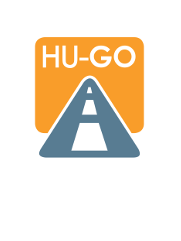
Important changes in the toll payment system
New toll road sections
On 1 January 2019, a number of new expressway and main road sections opened in 2018 will become part of the toll road network. In the e-toll system applicable to heavy duty vehicles with a gross weight of over 3.5 tonnes, the total length of toll road sections will increase from 6,880 km to 6,914 km (the number of basic tolled sections will change from 2,462 to 2,474). The new toll road sections are listed in the table below.
Road name | Road length (km) | Toll payable in the e-vignette system? |
Expressway M4 (road section between M0-Cegléd and Cegléd-Abony) | 8.2 | NO |
Expressway M25, north phase | 4.0 | NO |
Motorway M35 (road section between main road No. 481 and Berettyóújfalu) | 18.7 | YES |
Motorway M4 (road section between Berettyóújfalu and main road No. 47) | 3.7 | YES |
Main road No. 471 (Hajdúsámson bypass) | 8.6 | NO |
Main road No. 445 (between M5 and main road No. 5) | 3.4 | NO |
No more exemption for detours
As a result of an important change in the e-toll system for heavy duty vehicles with a gross weight of over 3.5 tonnes, the toll sections designated as detours will no longer be toll exempt as of 25 December 2018.
Until the end of 2018, any toll section designated as a detour is automatically exempt from toll. The previous legal provisions did not differentiate between ad hoc and fixed detours, nor was it possible to take into account when someone had already planned to travel on a route that was later designated as a detour.
Considering that in the latter case exemption for the vehicles concerned is not justified, the new legislation eliminates this possibility. At the same time, it also stipulates that in the case of ad hoc detours (in effect for no longer than 31 days), heavy duty vehicles travelling on the detour route shall be exempt from fines even if they have not fulfilled their toll payment obligations for the given road section (i.e. they have not purchased a route ticket or their on-board unit has insufficient balance).
The relevant regulations remain unchanged in the e-vignette system, thus no toll shall be paid for the use of otherwise toll sections that the road operator has designated as a detour.
Stricter emission classification
Another important amendment to the rules affecting the e-toll system will make the emission classification of motor vehicles stricter from 1 January 2019. Unlike now, only vehicles powered by engines of emission class EURO V or higher will be eligible for category A, which offers the most affordable rates. The reason for the amendment to the rules is to foster the enforcement of the “polluter pays principle” and to take account of the automotive developments concerning engines of the past few years.
New classification of the emission categories of heavy duty vehicles (with a gross weight of over 3.5 tonnes):
- Category A: motor vehicles with a minimum EURO V engine
- Category B: motor vehicles with a EURO II, EURO III and EURO IV engine
- Category C: motor vehicles with a EURO I engine or worse
Differentiating factors for the calculation of category-based toll:
Emission class | Vehicle categories J2-J3 | Vehicle category J4 |
Category A | 0.85 | 0.85 |
Category B | 1.0 | 1.0 |
Category C | 1.15 | 1.2 |
Toll rate per kilometre from 1 January 2019, taking into account the above emission classes and differentiating factors (gross amount):
Emission Class | J2 | J3 | J4 | |||
Expressway | Main road | Expressway | Main road | Expressway | Main road | |
A | HUF 47.12 | HUF 20.04 | HUF 66.11 | HUF 34.71 | HUF 102.34 | HUF 63.84 |
B | HUF 55.44 | HUF 23.58 | HUF 77.78 | HUF 40.83 | HUF 120.40 | HUF 75.10 |
C | HUF 63.76 | HUF 27.12 | HUF 89.45 | HUF 46.95 | HUF 144.48 | HUF 90.12 |


